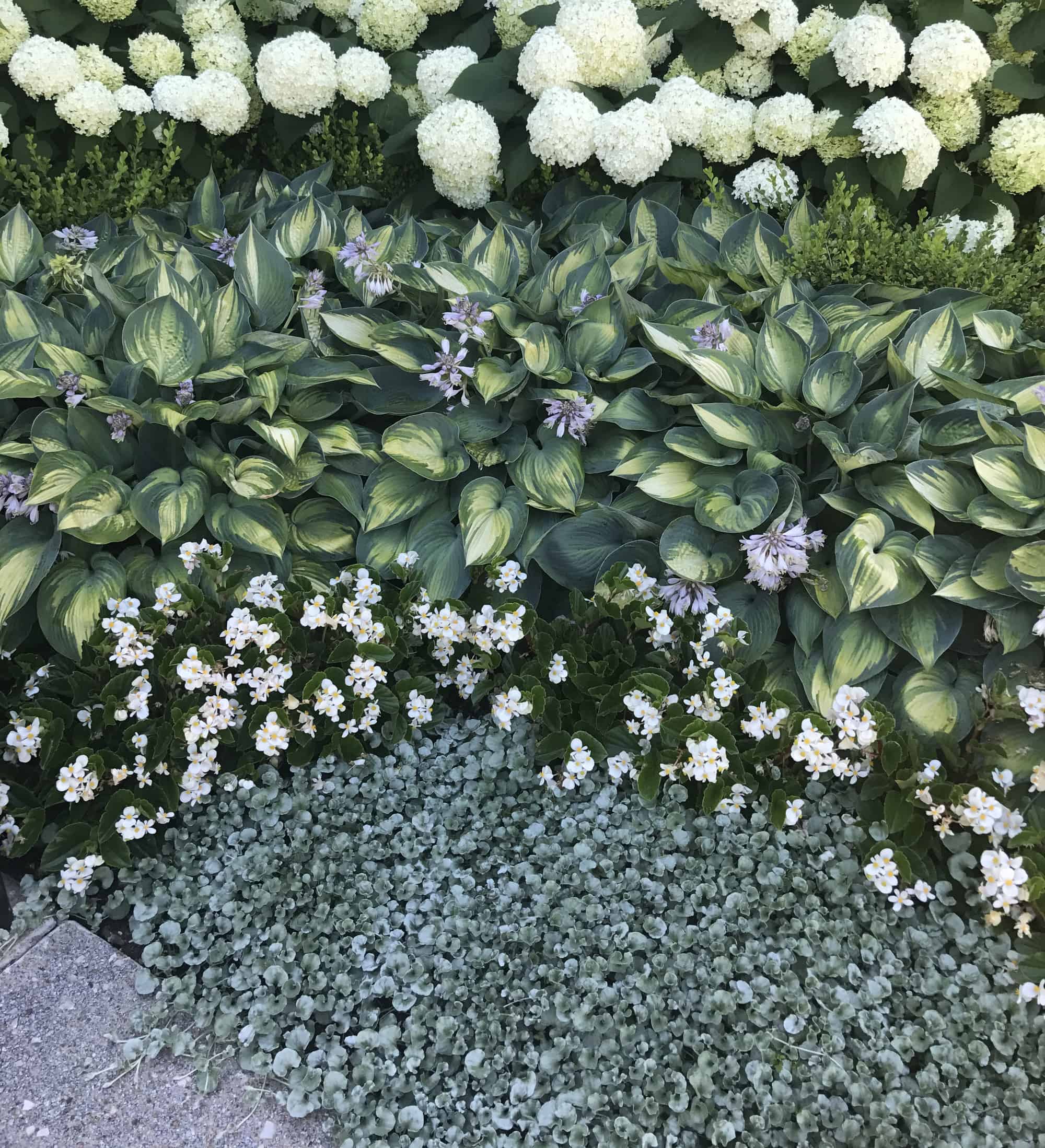Though it’s winter now, here at Focal Pointe we’re thinking about spring and are already designing new landscapes. There are several factors I always consider when working with a client to plan their landscape. Selecting plant material is one of the most important factors. It’s my job to select plants that are attractive to my client, complement their home, and are well-suited for their new environment. Below are a few tips on selecting plant material for your landscape:
Maintenance
The first thing to think about is how much maintenance you are willing to do. All plant material requires some maintenance, but if you cannot dedicate a lot of time to your landscape, it is important to select plant material accordingly. For example, I meet with a lot of clients who love flowering plants and would like to see everything flowering throughout the season. While this may sound beautiful, a landscape that is heavily planted in flowering shrubs and perennials requires a significant amount of maintenance to keep the plants healthy and attractive throughout the season. In these cases, I like to use lower maintenance flowering plants that hold their blooms for an extended amount of time, such as hydrangea. This approach adds flowers to the landscape without adding a lot of additional maintenance.
Colors, Shapes, & Textures
Including a variety of colors, shapes, and textures in your landscape adds to its overall appeal and is aesthetically pleasing.
Color: To complement your home, first consider if a warm or cool color palette fits best. A traditional red brick home looks great with rich green foliage with yellow or red accents, while a gray home looks beautiful surrounded by lighter green or blue tinted foliage with accents of purple. White is a timeless flower color that accents any home beautifully.
Shape: Using differently shaped plant material in varying heights adds interest to your landscape and can highlight special areas. For example, some clients request a taller plant with a pyramidal shape on either side of the entrance to their home, or a plant that is low and trailing to creep between the cracks of boulders.
Texture: Plant texture adds a lot of pop to a landscape but is not always considered. You can add texture to a landscape by using a mix of foliage types – such as grasses, evergreens, broadleaf evergreens, and deciduous plants. Ornamental grasses are a great way to add texture and can be found in all sizes.
Seasonal Visual Interest
Year-round visual interest is vital. In the St. Louis area, we plan for all four seasons. Planting evergreens evenly throughout your landscape allows you to have a nice display of color throughout the winter months. Even planting is critical – if evergreens are heavy on one side of the home and light on the other it will look unbalanced in the winter. Once evergreens are placed, incorporate deciduous plant material to provide seasonal interest. For example, you may select creeping phlox to add a pop of color in the spring, hydrangea to bloom throughout the summer and fall, then itea to provide beautiful fall foliage. You might also choose to leave pockets in your beds or have pots on your porch where you can rotate seasonal plants such as summer annuals (begonia, impatiens, coleus….), mums, pansies, and bulbs.

Other Design Considerations
Some other things to keep in mind as you plan your landscaping:
- When adding plants, be sure to plan for their mature size (not their current size). This becomes especially important when planting close to the foundation or when placing trees.
- Make sure that the plants you select will grow in your environment. Plant material is grouped into cold hardiness zones; here in St. Louis we are in a transition zone so look for plants that will survive in zone 5/6.
- Sunlight is also very important. Plants have different light requirements. Be sure to choose locations that provide each plant with the correct amount of sunlight so they can thrive in their new environments.
Finally, be sure to plan ahead for spring landscaping – don’t wait until the weather starts to turn warm. If you plan to hire a landscaping company, winter is the best time to get on the schedule for spring. For more information, contact us – we’re happy to help!
